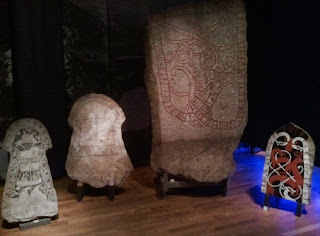Stockholm is full of wonderful museums and art galleries and I see as one of the perks of my stay here the possibility to revisit Kulturhuset, Medelhavsmuseet, Historiska Museet, Medeltidsmuseet and the Wasa ship. However, the problem arises on a Sunday after a busy period, when you do not really feel like be thoroughly inspecting the displays – as you should when you pay in order to get in.
I already had had a quick trip to the Kulturhuset, but those exhibitions were closed or closing, so there was not going to be anything new there. I knew that Medelhavsmuseet is not too taxing and the Cypriot collections are unusual outside the Cyprus itself. However, I was feeling like just tipping in and browsing a bit in a cultured surroundings.
Luckily, before heading to the centre I checked the local free Metro and realised that Historiska Museet is under renovation and free for the whole September. It was interesting to see the totally new exhibition. Last time I had been in the museum, there was a traditional beginning and then a 1970s bright colours before the Viking highpoint at the end.
Now the exhibition was totally different. One of those displays where you have a lot of visiual ideas and a narrative that avoids archaeological jargon and tries to be as easily understandable as possible. The displays also tried to make the past approachable so that the individuals were brought to the front.
There were no specific culture names or distribution maps. The prehistory was presented as a series of personal stories and circumstances (a ritually killed and buried girl, a man with Roman contacts, an aristocratic woman from early Middle Ages) or specific sites. The problem was that since the period information was almost lacking, it was very difficult for a non-Swedish archaeologist to compare material to for example Finnish or Mediterranean material from equivalent periods. I did my courses in Scandinavian archaeology so long ago that it was impossible to use this exhibition as a quick refresher course.
I really liked certain parts of the exhibition – such as the airport lounge with different gates with announcements to the past and mini-exhibitions discussing topics such as the use of the past in propaganda. However, I cannot understand why there were no maps. It would have been nice to see the distribution of the rune stones that were well displayed or something connecting Vendel tomb to the wider funerary landscape. Sometimes displays become so generic they almost use same universal characterisations from one period to another. Sometimes a few references to the Bell Beaker Culture could tell more about the past than very simply worded panels.


No comments:
Post a Comment